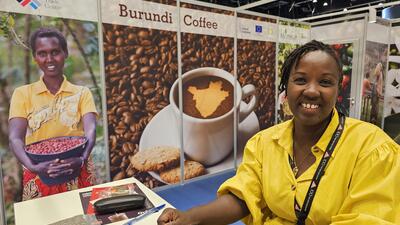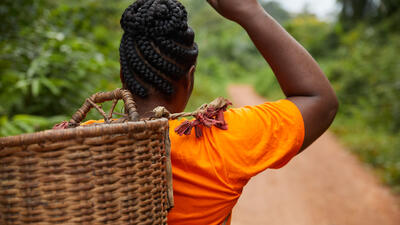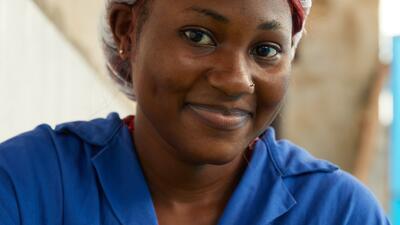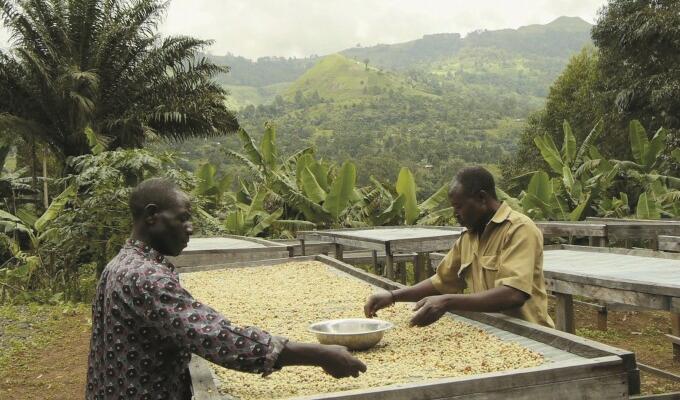
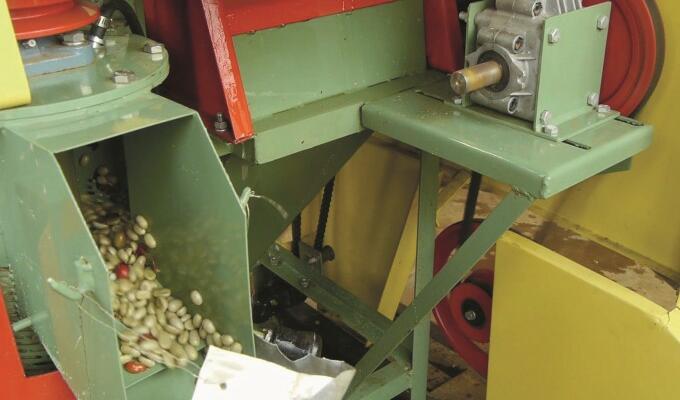
Breathing new life into Cameroon's coffee sector
Until recently, Anna Ngouet was caught in a poverty trap. The declining yield of her 500 coffee trees was reducing her income year after year. With less cash inhand, she did not have sufficient resources to maintain her plantation, resulting in deterioration in the quality of her produce. Not only did she earn a lower price for her less-than-premium harvest, only informal traders came to her farm, and they imposed unfair prices.
In 2011, Ngouet’s circumstances changed. Thanksto a coffee-sector development programme funded by the EU’s AAACP, a community-based coffee washing station was established 17 kilometres from Ngouet’s farm — close enough for her to transport her produce immediately after every harvest. There, she is able to process and store her beans and sell them at a fair market price.
“With the money that is left over, I pay for school, I pay the hospital and also for food,” she said. “I’m pleased, because this year I have not had a problem with children stealing. Every time I harvest I take the cherries directly to the station. This puts my mind at ease.”
Turning an ailing coffee sector around
Since 2008, ITC has been working in Cameroon to assist in the redevelopment of the country’s onceflourishing coffee sector, which began to decline in the late 1980s. Due to many factors, the volume and quality of coffee declined, and annual exports dropped from a high of 90,000 tonnes to just 35,000 tonnes in 2009.
“Practically everything you see today in Cameroon was built from coffee resources,” said Apollinaire Ngwe, chairman of the Inter-Professional Committee of Cocoa and Coffee. “As a cash crop, coffee was the only thing that allowed rural people to have money, buy clothes and send their children to school.”
Shrinking coffee exports, and the resulting loss of revenues, had a marked socio-economic impact in rural areas, contributing to acute poverty, food insecurity and poor access to basic services such as education, healthcare and sanitation for about 400,000 coffee-producing households.
The government recognized that a valuable resourcewas being lost, and Cameroon’s Ministry of Commerce turned to ITC in 2008 to facilitate a national strategy for coffee that could renew and rebuild coffee supply chains that generated income for so many families. The AAACP project was implemented by ITC in collaboration with NGO Café Africa, the World Bank, FAO and UNCTAD.
In October 2009, a coffee-sector development strategy was adopted by the government, followingan intensive planning period during which stakeholders from all coffee producing areas, valuechain stages and government agencies worked together in a process facilitated by ITC. The strategy identified three key objectives: raising the volume and quality of Cameroonian coffee by improving expertise and facilities, increasing the efficiency of the supply chain, and developing new markets.
“We received substantial support and useful techniques from the International Trade Centre, which contributed to a participatory process that led to the development of a strategy,” said Omer Maledy, Executive Secretary of the Inter-professional Council for Cocoa and Coffee and former Director of the National Office of Cocoa and Coffee. “ITC allowed Cameroon to master the methodology, so that we will be able to update our strategy and assist others.”
The success of the Cameroon coffee sector rejuvenation led to additional AAACP support for the National Office and Café Africa to complete a coffee-sector development strategy in seven provinces of the Democratic Republic of Congo. If funded by donors, implementation could improve the livelihoods of an estimated 400,000 coffee farmers.





